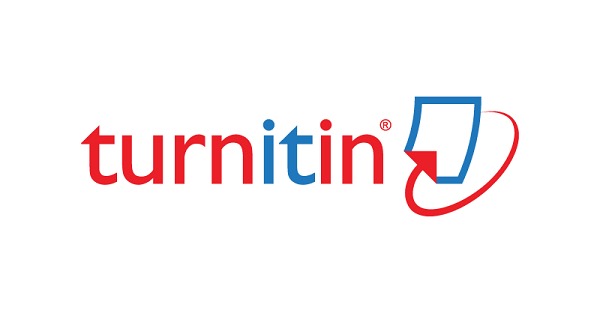A Systematic Review of Technology Integration in Early Childhood Education
Abstract
This systematic review article provides an in-depth examination of the integration of technology in Early Childhood Education (ECE) within the specific context of Indonesia. It aims to analyse and synthesise existing studies that have explored the employment of technology in ECE, with a focus on significant findings, methodologies used, and challenges encountered. This review also seeks to identify and comprehend the obstacles Indonesia faces in the endeavour of integrating technology in ECE, covering issues such as technological divide, teacher quality and readiness, and the availability and condition of infrastructures. Furthermore, it attempts to investigate the opportunities present in harnessing technology to fortify ECE in Indonesia by considering the current trend of technology adoption in Indonesia and potential types of technology that could be incorporated in ECE. Based on these objectives, the review aspires to provide useful recommendations for policymakers, educational practitioners, and researchers in devising and implementing effective strategies for technology integration in ECE. The results of this comprehensive review reveal that, despite significant challenges, the potential and opportunities offered by technology for ECE are vast and need to be capitalised optimally. The paper underscores the necessity of a thorough understanding, holistic approach, adequate preparation, and commitment from all stakeholders in achieving successful integration of technology in ECE in Indonesia.
Downloads
References
UNESCO. Early childhood care and education. 2021. Available from: https://en.unesco.org/themes/early-childhood-care-and-education
Nores M, Barnett WS. Benefits of early childhood interventions across the world: (Under) Investing in the very young.
Cheung ACK, Slavin RE. The effectiveness of educational technology applications for enhancing mathematics achievement in K-12 classrooms: A meta-analysis. Educational Research Review. 2013;9:88–113.
Alghazo EM. The effects of using flipped learning strategy on the academic achievement of eighth-grade students in mathematics and their attitudes towards it. International Journal of Emerging Technologies in Learning. 2020;15(12):4–20.
Muhamad D, Sutiani A, Indriyati I. Teachers’ perspectives on the use of digital technology in early childhood education in Indonesia. Astra Salvensis. 2018;6:289.
Wicaksono TY, Friawan D. Connectivity for all in Indonesia? : Challenges and recommendations for a more inclusive digital development. Telecommunications Policy. 2020;44(2):101866.
APJII. Penetrasi & Perilaku Pengguna Internet Indonesia 2020. 2020. Available from: https://apjii.or.id/downfile/file/BULETINAPJIIEDISI43.pdf
StatCounter. Mobile Operating System Market Share Indonesia. 2021. Available from: https://gs.statcounter.com/os-market-share/mobile/indonesia
Plowman L, Stephen C. The big picture? Video and the representation of interaction. British Educational Research Journal. 2005 Aug 1;31(3):257-74.
Judge S, Puckett K, Bell SM. Closing the digital divide: Update from the early childhood longitudinal study. Journal of Educational Research. 2006 Jan 1;100(1):52-60.
Clements DH, Sarama J. Effects of a preschool mathematics curriculum: Summative research on the Building Blocks project. Journal for Research in Mathematics Education. 2007 Mar 1:136-63.
Haßler B, Major L, Hennessy S. Tablet use in schools: a critical review of the evidence for learning outcomes. Journal of Computer Assisted Learning. 2016 Jun;32(2):139-56.
Yelland N. An investigation of a play‐based approach to mathematics learning in the first year of school. Contemporary Issues in Early Childhood. 2005 Dec;6(3):333-9.
Roschelle J, Pea R, Hoadley C, Gordin D, Means B. Changing how and what children learn in school with computer-based technologies. The future of children. 2000;76-101.
McPake J, Plowman L, Stephen C. Pre-school children creating and communicating with digital technologies in the home. British Journal of Educational Technology. 2013 May;44(3):421-31
Judge S, Puckett K, Cabuk B. Digital equity: New findings from the early childhood longitudinal study. Journal of Research on Technology in Education. 2004 Sep 1;36(4):383-96.
Highfield K, Goodwin K. Apps for mathematics learning: A review of ‘educational’apps from the iTunes app store. InMathematics education: Yesterday, today and tomorrow 2013 Sep 22 (pp. 378-385).
Hutchison A, Beschorner B, Schmidt-Crawford D. Exploring the use of the iPad for literacy learning. The Reading Teacher. 2012 Jan;66(1):15-23
Bers MU, Ponte I, Juelich K, Viera A, Schenker J. Teachers as designers: Integrating robotics in early childhood education. Information Technology in Childhood Education Annual. 2002 Jan 1;2002(1):123-45.
Ljung-Djärf A, Åkerfeldt A, Lantz-Andersson A. Multimodal design in mathematics: the design of an app for graphing functions. Cogent Education. 2014 Jan 1;1(1):970958.
Strouse GA, Ganea PA. Toddlers' learning from socially presented and book-presented language. Cognitive Development. 2017 Apr 1;41:123-38.
Plowman, L., Stephen, C., & McPake, J. (2010). Supporting young children's learning with technology at home and in preschool. Research Papers in Education, 25(1), 93-113.
Juden, H., & Khine, M. S. (2010). An investigation of the relationships between motivation, engagement, and complex problem solving in game-based learning. Educational Technology & Society, 13(4), 253-266.
Neumann, M. M. (2018). Using tablets and apps to enhance emergent literacy skills in young children. Early Childhood Research Quarterly, 42, 239-246.
Adedoja, G., Olaoye, A. A., & Oluwatayo, J. A. (2018). The relationship between access to technology and quality of education in sub-Saharan Africa. Education and Information Technologies, 23(5), 2251-2271.
Von Hippel, T. (2017). The role of teacher quality and teacher training in modern education. Education Sciences, 7(4), 84.
Warschauer, M., & Ames, M. (2010). Can one laptop per child save the world's poor?. Journal of International Affairs, 64(1), 33-51
Zawacki-Richter, O., Marín, V. I., Bond, M., & Gouverneur, F. (2019). Systematic review of research on artificial intelligence applications in higher education – where are the educators?. International Journal of Educational Technology in Higher Education, 16(1), 39.
Traxler, J. (2010). Will student devices deliver innovation, inclusion, and transformation?. Journal of the Research Center for Educational Technology, 6(1), 3-15.
Bulman, G., & Fairlie, R. W. (2016). Technology and education: Computers, software, and the internet. Handbook of the Economics of Education, 5, 239-280.
Ertmer, P. A., & Ottenbreit-Leftwich, A. T. (2010). Teacher technology change: How knowledge, beliefs, and culture intersect. Journal of Research on Technology in Education, 42(3), 255-284.
Clements, D. H., & Sarama, J. (2003). Strip mining for gold: Research and policy in educational technology-a response to" fool's gold. AACE Journal, 11(1), 7-69.
Warschauer, M., & Ames, M. (2010). Can one laptop per child save the world's poor?. Journal of International Affairs, 64(1), 33-51.

 Yuyun Istiana(1*)
Yuyun Istiana(1*)






